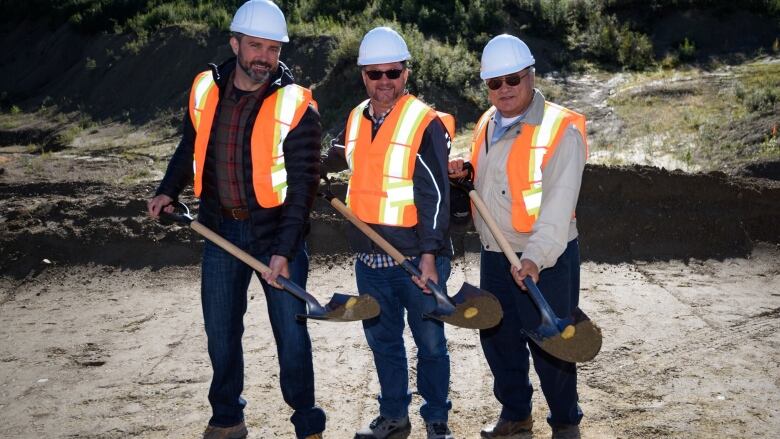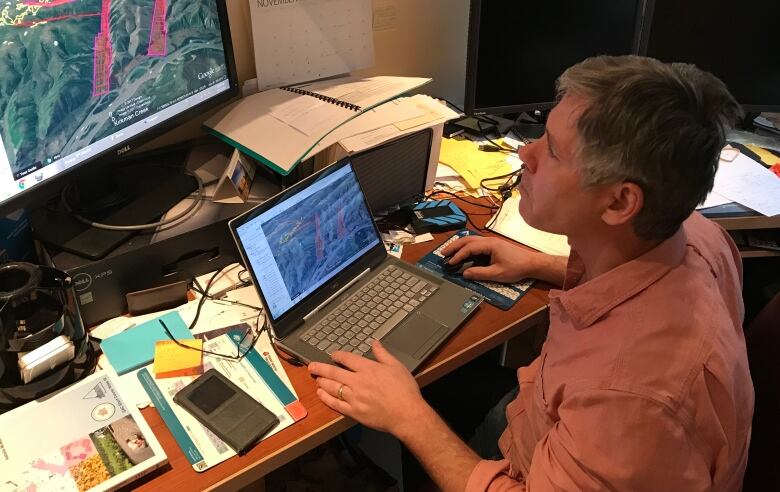2017 brought cash, more big names and good news to Yukon miners
Several of the biggest gold producers in the world have a staked a claim on Yukon's mineral wealth

People in Yukon's mining industry are optimistic about the future after increased spending and other developments over the past year.
Companies spent about $90 millionon mineral exploration in the territory in 2017, according to Scott Casselman, the territorial government's head of mineral services. That's up 57 per cent from 2016, he said.
Spending on mines in the development stage was $68 million mostly at Victoria Gold's Eagle Gold mine north of Mayo up from $8 million in 2016.

Casselman said as of early November, placer miners had reported production of 67,000 ounces of gold, worth $87 million.
Majors bring cash and stability
"You know, I think in general it's nice to see we've stopped that downward slide over the last few years.We've started the uptick, and hopefully we can continue on with that," said Casselman.
"It's attributable primarily to the interest of the major mining companies that have come into the territory, over this year and last."
The trend began in 2016 with Goldcorp buying Kaminak's Coffee property south of Dawson City. Other major producers followed, including Agnico Eagle Mines in late 2016, and Newmont Mining and Barrick Gold in 2017.
Kinross is also showing renewed interest in the territory. It'samong the biggest gold producers in the world, and itsinterest in the territory attracts other mining companies as well as cash and stability, said Casselman.
Roads, roads, roads
The mining industry enthusiastically welcomed Prime Minister Justin Trudeau's announcement in September promising millions of dollars in funding for new and upgraded mining roads in the territory.
The federal and territorial governments have pledged up to $360 million for the project.

Much of that is targeted for an area south of Dawson City known as the White Gold district. White Gold Corp owns almost 20,000 claims in the area, many, if not all, originally staked by prospector Shawn Ryan.
Ryan is also the company's technical director.
"And that's what's been really nice about the government sponsoring this new road program it'll actually go through the heart of all that area," said Ryan.
He said roads will allow companies to develop gold deposits not rich enough to support a stand-alone mine, butviable when several of them feeda single mill.
Trudeau's announcement was panned by others, however, who questioned environmental risks associated with mining roads and spending public money to benefit mining companies.
Peel decision and indecision
The Supreme Court of Canada's decision on the Peel River watershed land use plan, issued in December, could have a far-reaching impact on the mining industry.
The court upheld Yukon land claim agreementsandas a consequence, the territorial government has a duty to work in good faith with First Nations on drafting land use plans for the territory.

The decisionwas celebrated by many in the territory as a victory for protecting wilderness areas. Others saw it as bringing more certainty for resource development companies.
Ryan, however, sees more discord ahead. The Peel watershed was only the second Yukon region to go through the planning process.
There are potentially eight more regions to go, and Ryan worries that each could turn into a divisive and costly battle that ends with more land removed from mineral staking.

A better way, he said, would have been to decide at once which areas of the territory should be protected, and then move on from there.
"We didn't sit back as a society and say, 'well,we want to protect, and let's make it kind of even to each ecosystem or whatever.' But we haven't travelled that route.We've been kind of reacting instead of thinking as a whole here," said Ryan.












_(720p).jpg)


 OFFICIAL HD MUSIC VIDEO.jpg)
.jpg)



























































































